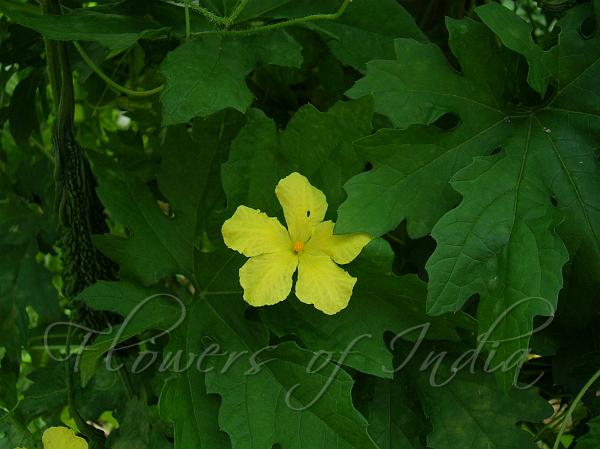|
| Bitter Gourd |
|

|

| File size | 698530 |
| Original date | 7/6/05 7:51 AM |
| Resolution | 2048 x 1536 |
| Flash | Flash did not fire, auto |
| Focal length | 6.1mm |
| Exposure time | 1/188s |
| Aperture | 2.9 |
| Focus Distance | |
| Metering Mode | Partial |
| Camera make | NIKON |
| Camera model | E3700 |
| Sensor type |
|
|
|
|
Photo: |
Botanical name: Momordica charantia Family: Cucurbitaceae (Pumpkin family)
Synonyms: Momordica muricata, Momordica zeylanica, Momordica charantia var. muricata
Synonyms: Momordica muricata, Momordica zeylanica, Momordica charantia var. muricata
Bitter Gourd is a herbaceous, tendril-bearing vine, growing up to 5 m. It
bears simple, alternate leaves 4-12 cm across, with 3-7 deeply separated
lobes. Each plant bears separate yellow male and female flowers, about 2-3
cm in diameter. Male flowers, more numerous, have a yellow center and
conical base, while female flowers have a green center and small bump at
the base. The fruit has a distinct warty looking exterior and an oblong
shape. It is hollow in cross-section, with a relatively thin layer of
flesh surrounding a central seed cavity filled with large flat seeds and
pith. Seeds and pith appear white in unripe fruits. The fruit is most
often eaten green. Although it can also be eaten when it has started to
ripen and turn yellowish, it becomes more bitter as it ripens. When the
fruit ripens and turns orange and mushy, it is too bitter to eat. It
splits into segments which curl back dramatically to expose seeds covered
in bright red pulp.
| Identification credit: Thingnam Girija | Photographed in Manipur. |
• Is this flower misidentified? If yes,